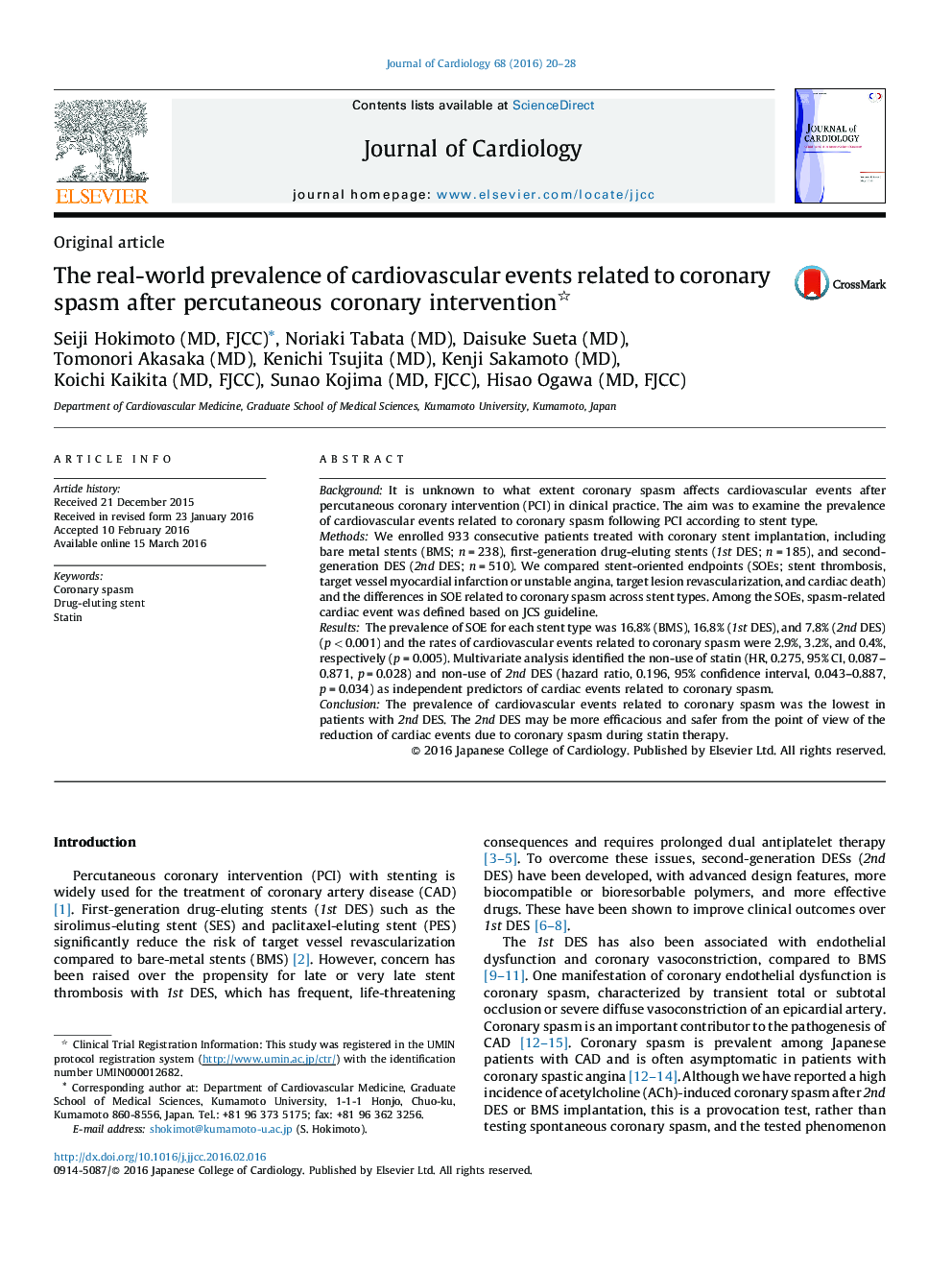| Article ID | Journal | Published Year | Pages | File Type |
|---|---|---|---|---|
| 2962751 | Journal of Cardiology | 2016 | 9 Pages |
BackgroundIt is unknown to what extent coronary spasm affects cardiovascular events after percutaneous coronary intervention (PCI) in clinical practice. The aim was to examine the prevalence of cardiovascular events related to coronary spasm following PCI according to stent type.MethodsWe enrolled 933 consecutive patients treated with coronary stent implantation, including bare metal stents (BMS; n = 238), first-generation drug-eluting stents (1st DES; n = 185), and second-generation DES (2nd DES; n = 510). We compared stent-oriented endpoints (SOEs; stent thrombosis, target vessel myocardial infarction or unstable angina, target lesion revascularization, and cardiac death) and the differences in SOE related to coronary spasm across stent types. Among the SOEs, spasm-related cardiac event was defined based on JCS guideline.ResultsThe prevalence of SOE for each stent type was 16.8% (BMS), 16.8% (1st DES), and 7.8% (2nd DES) (p < 0.001) and the rates of cardiovascular events related to coronary spasm were 2.9%, 3.2%, and 0.4%, respectively (p = 0.005). Multivariate analysis identified the non-use of statin (HR, 0.275, 95% CI, 0.087–0.871, p = 0.028) and non-use of 2nd DES (hazard ratio, 0.196, 95% confidence interval, 0.043–0.887, p = 0.034) as independent predictors of cardiac events related to coronary spasm.ConclusionThe prevalence of cardiovascular events related to coronary spasm was the lowest in patients with 2nd DES. The 2nd DES may be more efficacious and safer from the point of view of the reduction of cardiac events due to coronary spasm during statin therapy.
